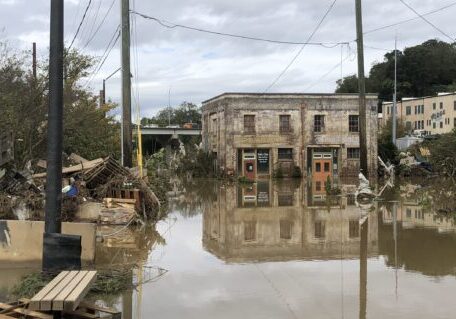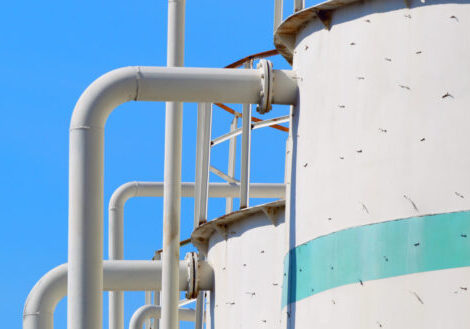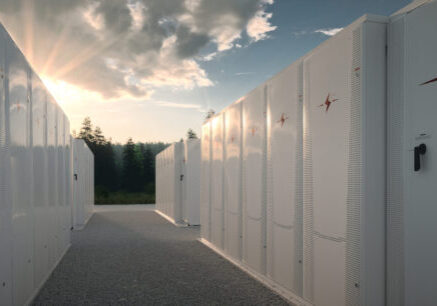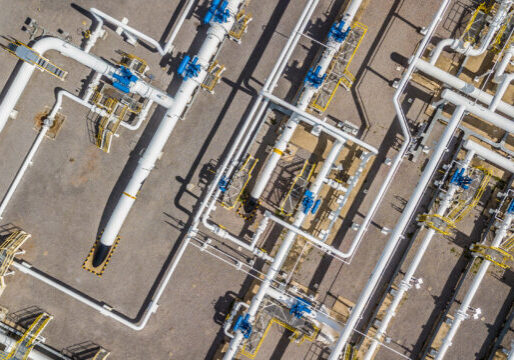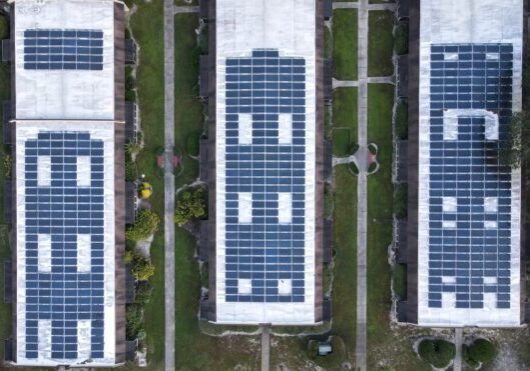August 23, 2016
Offshore Wind Power on the Horizon for the Gulf of Maine
By Val Stori
As you drive through the small, bucolic town of Orono, Maine to the University of Maine’s main campus, you would not initially expect to find a world-class research center dedicated to the development of innovative advanced structures and composite materials. Three hours after a scenic drive along the Maine coast and interior lakes, I made my way onto the UMaine campus in search of Dr. Habib Dagher and the Advanced Structures and Composite Center to discuss offshore wind and see the University’s new Ocean Engineering Lab, featuring a unique wind/wave test basin.
The University of Maine was the first in the US to launch a grid-tied offshore wind turbine in the US. A UMaine Composites Center research program designed a 6MW floating concrete platform and advanced composites materials tower—the VolturnUS prototype, which it deployed at a 1:8 scale off the coast of Castine for 18 months (June 2013 through November 2014). UMaine researchers observed and recorded the motions of the hull and the environment surrounding the turbine with over sixty sensors. With the prototype out of the water and eighteen months of data in hand, UMaine researchers were able to validate design assumptions and numerical models. The research demonstration was funded in part by the US Department of Energy (US DOE), the National Science Foundation, the University of Maine, and the Maine Technology Institute.
When I walked into the new Alfond W2 Ocean Engineering Lab, housed in a 100,000-square-foot laboratory facility, researchers were preparing the wind and wave basin to host a 1:50th scale prototype of the final VolturnUS platform and turbine. The scaled model will sit in the tank for three weeks, where a rotating wind machine and wave maker will simulate hurricane conditions. Again, multiple dozens of sensors will relay real-time data to UMaine researchers to help the team make any final tweaks to the 6MW semi-submersible hull design. A day before the 1:50 model was placed in the basin, the lab was abuzz with researchers assessing equipment, laying mooring lines, and testing sensors. Dozens of sensor wires emerged from the tank and were taped across the lab floor. Excited anticipation of the project’s final test launch filled the lab.
The VolturnUS floating concrete hull technology will be used in the proposed New England Aqua Ventus I 12MW offshore wind pilot project off the shores of Monhegan Island, Maine. In 2009, the Maine Department of Conservation—after an extensive public outreach process—designated a wind energy and development site in state waters nearly 3 miles south of Monhegan Island for the demonstration project. The pilot project is the first stage of offshore wind development for a UMaine-led consortium that hopes to develop New England Aqua Ventus II, a 400-500MW floating offshore project, and additional follow-on projects. The 12 MW pilot will demonstrate the semi-submersible concrete hull at full scale, helping launch an innovative design that has the potential to harness vast wind resources in deep ocean waters while reducing costs. If successful, the concrete hull could revolutionize deep water offshore wind development.
The New England Aqua Ventus I project brings together many local and global private and public entities who have formed a leadership team to develop, construct, and operate New England Aqua Ventus. Project leaders include Emera Inc., Cianbro Corp., UMaine, and UMaine’s Advances Structures and Composites Center. Most recently, French naval defense and ocean energy developer DCNS joined the project team. Together, the team is focused on reaching commercial scale, manufacturing the foundation, and reducing costs so that the technology can be competitive with other forms of electricity when scaled up. In May, the consortium won an additional $39.9 million over three years from the US DOE’s Offshore Wind Advanced Technology Demonstration program. The project must meet project milestones to continue receiving funding. For the UMaine-led project, final design, permitting, and power purchase agreements are all that remain between now and proposed commercial operation in 2019.
At the heart of the partnership is a strong drive to cut costs, create local jobs, and provide renewable energy. The Consortium already has its supply chain in place, with most of materials and services based in Maine and New England. Maine has the concrete production and manufacturing facilities and materials to construct the foundations in-state. If the technology advances to commercial scale, Maine’s economy stands to benefit from new jobs in the construction, operations, products, and services sectors. A 2013 report estimated the salary impact of the 12 MW Aqua Ventus I demonstration project at $37.4 million to $51.9 million with an estimated 341-475 full- and part-time jobs during project construction. Because the hulls are made of concrete, the hulls can be fabricated on-land and towed out to sea with common tugboats. This not only lowers risks and costs, but also reduces environmental impacts and the need for specialized vessels. In addition, the concrete hulls have an estimated life span of 100 years, three to four times the typical life span of a turbine or a typical offshore wind farm. At the end of a turbine’s life of 20-25 years, the foundations can be towed to shore for turbine replacement, eliminating the need to replace the entire foundation, typically the second most expensive item in the construction of offshore wind farms.
As I hung up my hardhat and safety glasses outside the lab and started down the long hallway lined with photos and stories commemorating the Lab’s many achievements, I was reminded of the many products and testing projects that have their roots in Orono. Here, seemingly at the end of the road in Maine, was a laboratory not only outfitted in state-of-the-art equipment, but also partnered with business leaders and industrial clients throughout the state, country, and world. Deep water offshore wind development in Maine and around the world has a bright future with the innovative developments taking place in Orono today.





